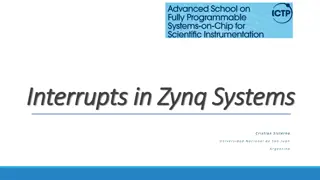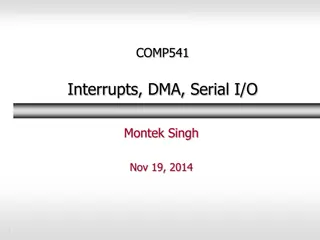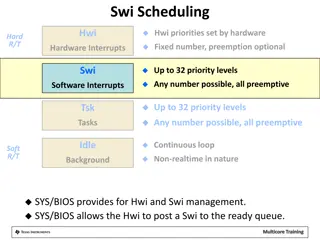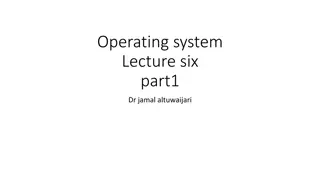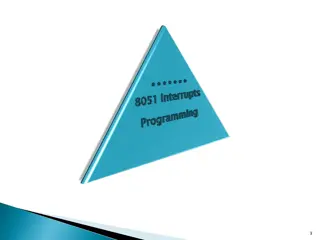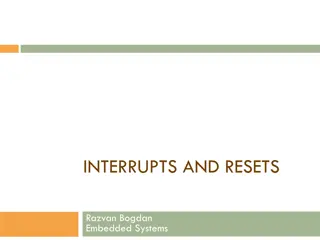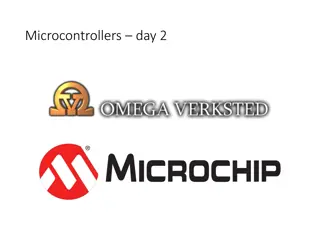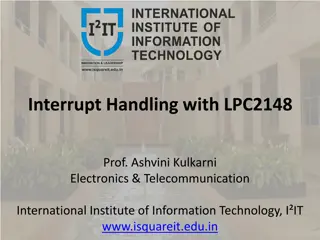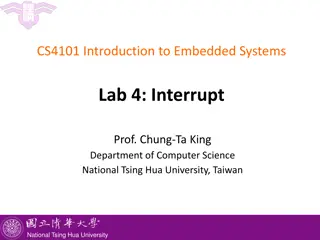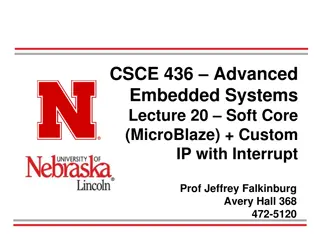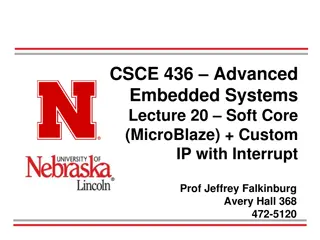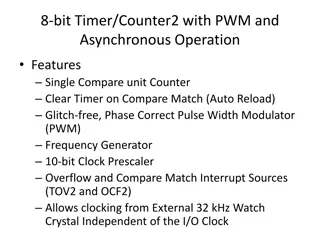Move, Compare, and Interrupt Instructions
Explore the functionalities of move instructions like MOVES, MOVSB, and MOVSW within string operations. Learn how to compare strings using the CMPS instruction and perform interrupt handling with INTs to transfer control to an interrupt service routine. Discover the mechanism of interrupts, hardware and software interrupt types, interrupt vector table, and interrupt processing in microprocessors.
Download Presentation

Please find below an Image/Link to download the presentation.
The content on the website is provided AS IS for your information and personal use only. It may not be sold, licensed, or shared on other websites without obtaining consent from the author.If you encounter any issues during the download, it is possible that the publisher has removed the file from their server.
You are allowed to download the files provided on this website for personal or commercial use, subject to the condition that they are used lawfully. All files are the property of their respective owners.
The content on the website is provided AS IS for your information and personal use only. It may not be sold, licensed, or shared on other websites without obtaining consent from the author.
E N D
Presentation Transcript
62 Move String The instructions MOVES, MOVSB, and MOVSW all perform the same basic operation. An element of the string specified by the source index (SI) register with respect to the current data segment (DS) register is moved to the location specified by the destination index (DI) register with respect to the current extra segment (ES) register. After the move is complete, the contents of both SI and DI are automatically incremented or decremented by 1 for a byte move and by 2 for a word move. Remember the fact that the address pointers in SI and DI increment or decrement depends on how the direction flag DF is set. Compare Strings and Scan Strings The CMPS instruction can be used to compare two elements in the same or different strings. It subtracts the destination operand from the source operand and adjusts flags CF, PF, AF, ZF, SF, and OF accordingly. The result of subtraction is not saved; therefore, the operation does not affect the operands in any way CMPS BYTE The source element is pointed to by the address in SI with respect to the current value in DS and the destination element is specified by the contents of DI relative to the contents of ES. Both SI and DI are updated such that they point to the next elements in their respective string. The scan string (SCAS) instruction is similar to CMPS, however, it compares the byte or word element of the destination string at the physical address derived from DI and ES to the contents of AL or AX, respectively. The flags are adjusted based on this result and DI incremented or decremented.
63 Interrupts (INTs) Interrupt is a mechanism by which a program's flow of control can be altered, INT provide a mechanism to transfer control to an interrupt service routine (ISR). This mechanism is similar to that of a procedure call however, while procedure can be invoked only by a procedure call in software. INT can be invoked by both hardware and software. For instance, when an interrupt signal occurs indicating that an external device, such as a printer, requires service. The microprocessor must suspend what it is doing in the main part of the program and pass control to a special routine that performs the function required by the device. The section of program to which control is passed is called the interrupt service routine (ISR). terminates execution in the main program, it remembers the location where it left off and then picks up execution with the first instruction in the service routine. After this routine has rum to completion, program control is returned to the point where the microprocessor originally left the main body of the program. When the microprocessor The interrupts of the microprocessors include two hardware pins that request interrupts (INTR and NMI), and one hardware pin (INTA) that acknowledges the interrupt requested through INTR. In addition to the pins, the microprocessor also has software interrupts INT, INTO, INT3 and BOUND. Two flag bits IF and TF are also used with the interrupt structure and a special return instruction IRET. All Interrupt whether HW-initiated or SW-initiated, are identify by an INT-Type number that is between (0 and 255), this INT number is used to access the interrupt vector table (IVT) to get the
64 associated interrupt vector. HW interrupt can be masked or disable by manipulating the INT flag using (STI and CLI) instruction. Interrupt Processing The Interrupt Vector Table (IVT) is located at address 0, each vector takes 4 bytes. Each vector consist of a (CS:IP) pointer to the associated ISR, 2 byte for specifying the CS, and 2 byte for the offset (IP) within the CS. As shown in the below Figure(18). The IVT layout in the memory since each entry in the IVT is 4 byte long, INT type is multiplied by 4 to get the corresponding ISR pointer in the table. For example , INT 2 can find the ISR pointer at memory address 2*4 =00008H, the first 2 byte at the specified address are taken as the offset value, and the next 2 byte as the CS value. Thus executing INT 2 causes the CPU to suspend its current program and calculate the address in the IVT (which is 2*4=8) and read CS:IP value and transfer control to that memory location. Just like procedure ISR, should end with a (RET) inst to send control back to the INT program. The interrupt return (IRET) is used for this purpose. On receiving an INT, flag register is automatically save on the stack. The INT enable flag is clear. This disable attending further INT until this flag is set. Usually, this flag is set in ISR unless there is a special reason to disable other INT.
65 . . . . CS High Byte CS low Byte . . . . . . . . IP high Byte IP low Byte . . CS 00007 CS INT Type 2 CS 00006 00005 IP IP 00004 IP 00003 CS CS 00002 CS INT Type 1 00001 IP IP 00000 IP CS High Byte CS CS low Byte INT Type 0 IP high Byte IP IP low Byte


